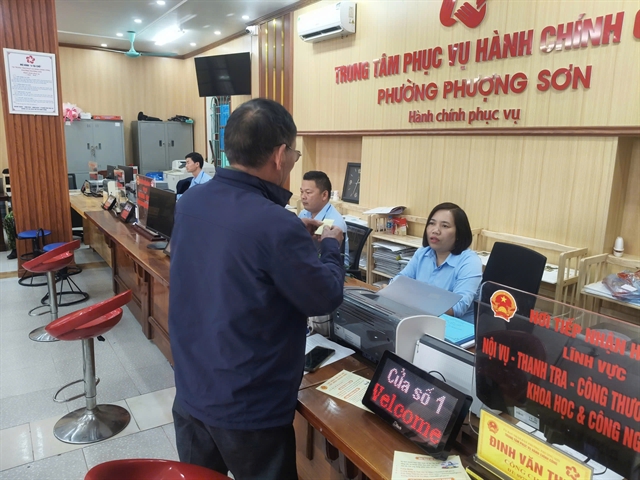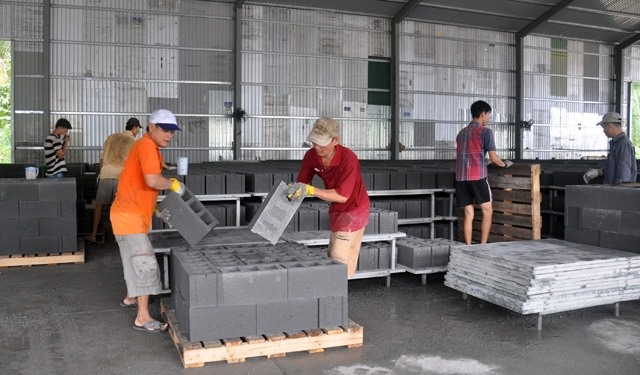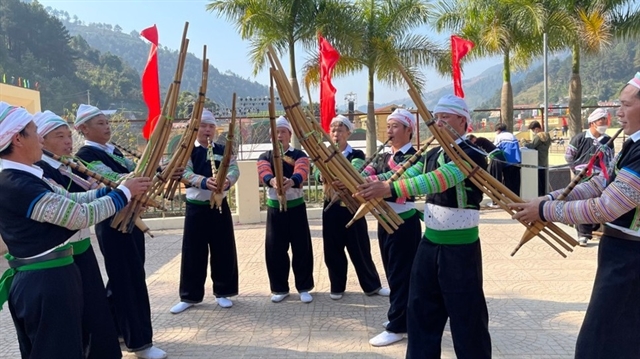 Society
Society

A number of enterprises have struggled to recycle ash and cinders from thermal power plants in order to manufacture non-fired adobe brick and non-flammable construction materials.
 |
| A number of enterprises have struggled to recycle ash and cinders from thermal power plants in order to manufacture non-fired adobe brick and non-flammable construction materials.— Photo enternews.vn |
HÀ NỘI — A number of enterprises have struggled to recycle ash and cinders from thermal power plants in order to manufacture non-fired adobe brick and non-flammable construction materials.
According to Electricity of Việt Nam (EVN), the company is operating 12 coal thermal power plants nationwide, discharging 8.1 million tonnes of ash and cinders per year on average.
Coal thermal power plants in the northern region have signed contracts with partners to recycle huge amounts of ash and cinder. Phả Lại and Ninh Bình plants have recycled all of their waste, mainly to make additives for cement, concrete, plaster and non-fired adobe brick, said Tạ Anh Tuấn from the technical and manufacturing council of EVN.
He said that plants in northern Quảng Ninh Province as well as in southern provinces, however, still face difficulties in treating ash and cinder, so the consumption of ash and cinder hasn’t reached a significant level.
In 2010, the Government approved a programme for the development of non-fired materials by 2020. Non-fired construction materials are targeted to account for 30-40 per cent of all materials by the end of this year.
The Ministry of Natural Resources and Environment regulates ash and cinder as toxic materials. There are no instructions on recycling ash and cinder, said a representative of Sông Đà Cao Cường Company.
Vietnamese construction materials still lack standards. Japan, South Korea, the UK and France have standards on cement and non-fired material production, said the representative, adding that the criteria for non-fired construction materials’ need to be standardised in Việt Nam.
Associate Professor Trương Duy Nghĩa, chairman of Việt Nam Thermal Science and Technology Association, said that consumers are not accustomed to non-fired brick and think it is of lower quality than clay brick.
Nghĩa confirmed that non-fired bricks made from ash are as good as clay bricks.
“Making bricks from ash contributes to recycling waste into useable materials,” he said.
Vũ Thanh Tuyền, general director of Thanh Tuyền Construction Company, said that ash and cinders should be regarded as a type of resource, not waste that needs treatment.
At a recent conference on making construction materials from ash and cinder, enterprises which manufacture non-fired materials proposed that authorised agencies support the business with middle and long-term preferential loans or three-to-five-year tax breaks to create better conditions and make non-fired brick enterprises more competitive in the race with clay brick business.
They also agreed with a proposal to establish an association of ash and cinder consumption.
Nguyễn Tài Anh, EVN deputy general director, said that the company is willing to collaborate with partners to look for measures and long-term plans to promote the use of ash and cinders.
“We prioritise co-operation with partners who plan to use ash and cinders at a high volume and select partners in a competent and transparent manner,” Tài said.
EVN also proposed State agencies issue legal requirements making the use of products made from ash, cinders, concrete, slag and non-fire brick compulsory.
Associate Professor Trương Duy Nghĩa said that we should look to ban the production of clay bricks nationwide and order construction and transport sectors to use ash and cinders from thermal power plants in construction works.
Việt Nam has a huge potential for recycling ash and cinders in the construction sector. The quantity of ash collected during the 2021-25 period is predicted to reach more than 89 million tonnes. The figure for 2026-30 is 105.2 million tonnes.
It is estimated that one million tonnes of ash can produce some 600 million non-fired bricks in standard sizes. — VNS




